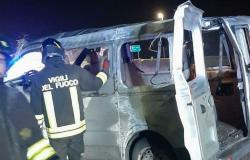NASA’s Voyager craft have ventured where no other human machines have ever gone — the space between the stars. But that comes with a cost.
At some 15 and 12 billion miles away, Voyager 1 and 2 are beyond the protective bubble of the sun, called the heliosphere. Out in this realm of interstellar space, the nearly 50-year-old probes have a higher probability of damage from hostile, high-speed particles, called galactic cosmic rays, owing to a higher number of particles zooming by every second.
“We are dodging bullets out there,” Alan Cummings, a cosmic-ray physicist at Caltech — the research university that manages NASA’s Jet Propulsion Laboratory — told Mashable. Cummings began working on the Voyager mission 51 years ago.
NASA spacecraft keeps on going faster and faster and faster
But direct hits are inevitable. In 2010, while on the edge of our solar system’s heliosphere, Voyager 2 unexpectedly began sending gibberish back to Earth. Cummings suspects that a passing galactic cosmic ray tripped part of a computer’s memory — though NASA was eventually able to rectify the problem. Most recently, Voyager 1 failed to send back readable data for five months, a particularly worrying incident that may also have been triggered by a cosmic ray. Something corrupted a computer chip.
“We don’t know everything,” Cummings explained, referencing the difficulty in perfectly diagnosing such profoundly distant mishaps. “But I do think galactic cosmic rays are the guilty party here for most of these problems.”
“We are dodging bullets out there.”
Galactic cosmic rays are merciless because they’re extremely tiny, charged particles, traveling at incredible speeds — nearly the speed of light. “The galaxy is permeated with galactic cosmic rays,” Cummings marveled. Astronomers think violently exploding stars — supernovae — are responsible for creating these particles, as the colossal shock wave from the event accelerates the particles. Stripped of their outer shells, they hurtle through space as just the nuclei of atoms.
The heavier ones, like iron atoms transformed into galactic cosmic rays, can cause more damage than the lighter, more abundant ones. (It’s somewhat like getting hit by a bowling ball at 50 mph, versus a golf ball.) They can zip right through a computer chip — altering its code — or even become lodged there, where they can pack an even bigger punch by doing permanent damage.
Mashable Light Speed
A graphic showing Voyager 1 and 2 having traveled beyond the sun’s partially protective heliosphere, and into interstellar space.
Credit: NASA/JPL-Caltech
Engineers installing a golden record — containing music, sounds, and imagery from Earth — to the side of Voyager 1.
Credit: NASA/JPL-Caltech
Of course, NASA spacecraft like the Voyagers are equipped with radiation-resistant parts and shielding, including wrapping around critical cables. These layers can keep out some particles — but not all. “You can protect yourself to some extent, but a high-enough-energy particle will get through your defenses,” Cummings explained. Early in the Voyager mission, the space agency’s engineers were worried about the craft passing by Jupiter, a planet that produces intense radiation. A person hypothetically riding aboard Voyager would have gotten hit with a radiation dose 1,000 times the lethal level. “That was pretty hostile,” Cummings recalled. He said a few detectors on his galactic-ray measuring instrument (the Cosmic Ray Subsystem) they were wounded, but overall, both the instrument and entire spacecraft survived to produce new scientific results, including vibrant, unprecedented imagery.
Yet out in the deeper cosmos, the Voyagers face a different threat. Around the gas giant Jupiter, the craft were sprayed with charged particles, but they had lower energy. Now in interstellar space, the craft are more often exposed to those high-energy particles. Any place in space — whether in our solar system or beyond — can meet the threat of a harmful galactic cosmic ray. But the odds are boosted in the interstellar realm.
“Explorers run into problems when they enter into new territory.”
When might another such hit come? “It’s just a random chance out there right now,” Cummings said.

The Voyager team celebrates after restoring some communication to Voyager 1 on April 20, 2024.
Credit: NASA/JPL-Caltech
Billions of miles away, on Earth, in sunny Pasadena, California, however, the craft has a guardian. Or, a legion of guardians. NASA and Caltech engineers have for decades devised ways to keep the aging, radiation-pummeled craft alive. They communicate with vintage computers aboard the nearly half-century old probes. Talking to an interstellar craft isn’t like sending a text: It takes almost two days to transmit and then receive a message. Most recently, in April, NASA engineers squared off with a permanently-damaged computer chip on Voyager 1. By beaming messages to the craft, over 15 billion miles away, they successfully stored the defunct chip’s unique code in other chips, as “no single location is large enough to hold the section of code in its entirety,” the agency explained. The craft is once again communicating about its health, but not yet returning science data.
“You have to praise the engineers,” Cummings emphasized.
They’ve certainly been busy. And in hostile space, with high-speed particles ceaselessly whizzing by, they’ll likely continue to be. The craft are running low on nuclear fuel, but could — if undamaged — beam back unprecedented readings from uncharted space through the mid-2030s.
“Explorers run into problems when they enter into new territory,” Cummings said. “Lewis and Clark didn’t have an easy time, either.”







